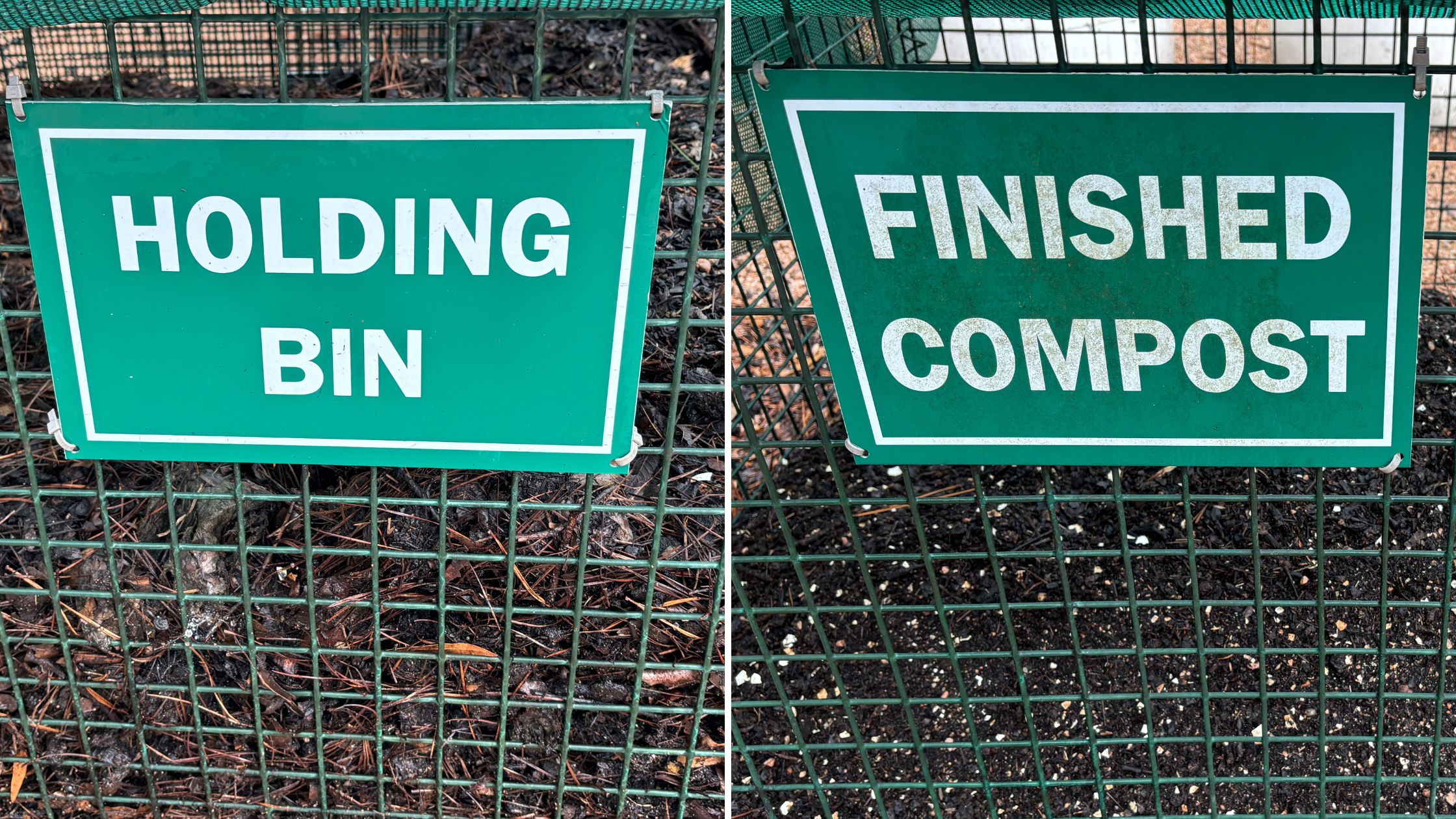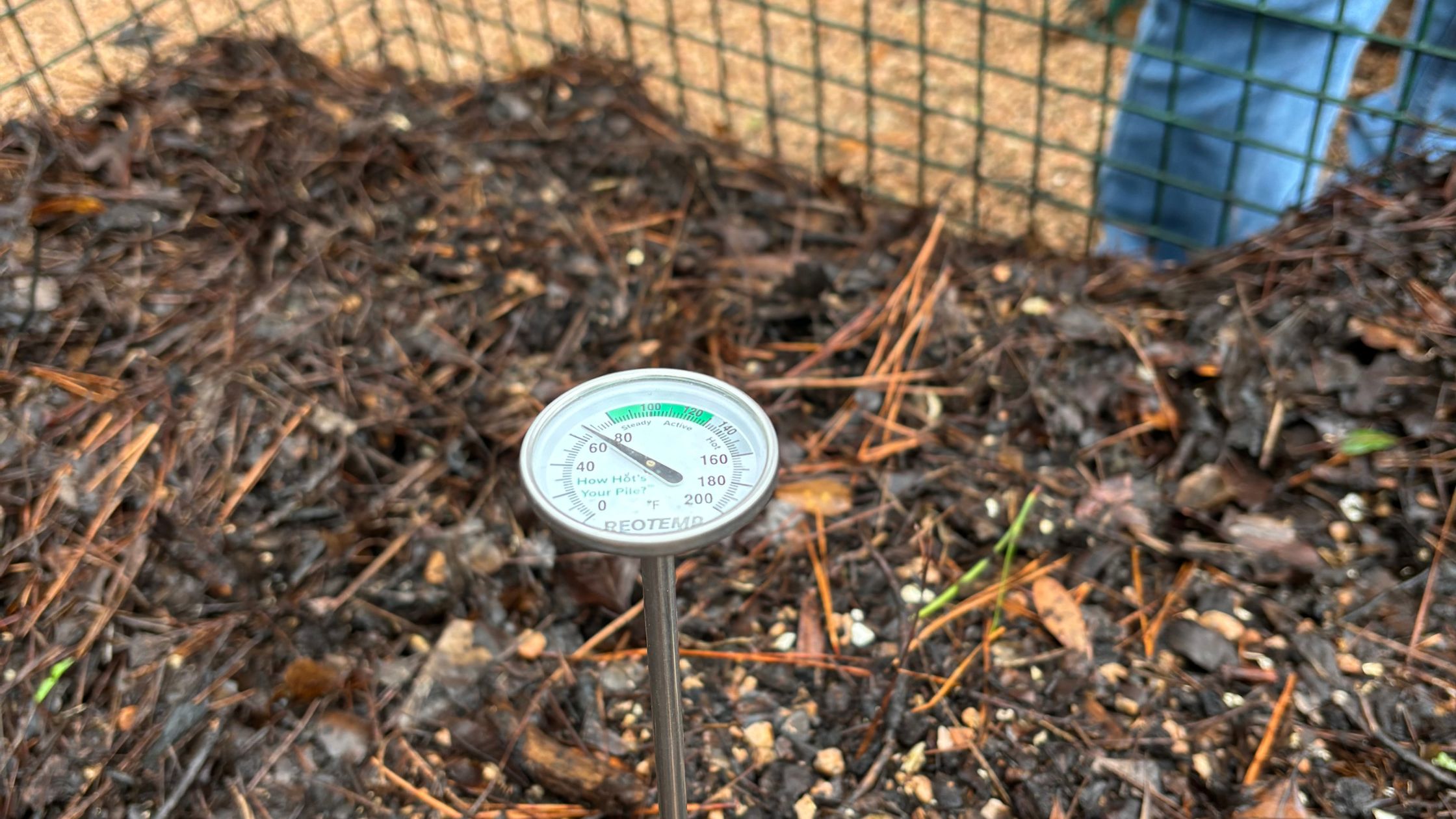I'm a big advocate for having a garden. Even if it's just a few herbs in some containers, when you're growing food it's one less thing you have to buy at the grocery store. Another thing I think is a good idea? Starting a compost bin. Admittedly this idea does not work well if you live in an apartment, have a very tiny yard, or live in an area where composting is not allowed. If you are allowed to compost, however, it's a great way to repurpose a lot of your everyday kitchen waste.
What is compost?
Made from a mixture of ingredients such as food waste, decomposing plant matter, and organic materials, compost is the result of these items breaking down to create soil. It is then used to improve the biological properties of garden beds, containers, and pots. Compost is a mixture of ingredients that are rich in plant nutrients and beneficial organisms.
Why start a compost bin?
One of the best things about composting food waste is to keep it out of the landfill. In the US about 30% of the garbage in a landfill is food waste. Although vegetable peelings and other kitchen scraps will break down into nutrient-rich soil that can be used in the garden or even in houseplants, when sent to the landfill it's a different story. There, because the food waste is surrounded by non-organic materials, instead of breaking down it rots and releases methane.
Learning how to compost, or finding a service that will compost your food scraps for you, is a good way to keep them out of the landfill and help reduce toxic emissions.
Learning about compost
It was a rainy, chilly Saturday morning when we all piled into the classroom at the township community education center. The recreation center was offering a composting class taught by several Master Gardeners and a Master Composter.
Although I have a (small) compost bin in my yard I decided to attend to learn how I could improve my compost pile. After a comprehensive discussion of compost we all tromped over to the demonstration bins in the side yard. There we were able to see the different stages of compost.
The instructors also asked for volunteers to help turn the pile, everyone pitched in and made short work of it. I'm glad I went to the class because it turns out I'm not putting enough brown material into my compost bin, something we'll be working on over the next few weeks.
The SMARTs of composting
- Size - 4 feet wide by 4 feet high is recommended
- Moisture - it should feel like the consistency of a damp wrung-out sponge
- Aeration - compost should be turned at least every six months to add more oxygen and revive the microbes
- Ratios - your compost pile should be 2 parts brown matter to 1 part green matter. The brown is carbon, what the microbes are breaking down, the green is nitrogen, what the microbes eat.
- Temperature - having a soil thermometer can be a useful tool. The compost pile should be between 135°F and 160°F in order to break down properly.
Other composting information
- Brown matter sources are: chopped leaves, grass clippings, hay, pine needles, spent dirt, and soggy shredded paper or shredded cardboard. The paper products need to be mixed in, do not put them in a layer or it will turn into paper mache.
- Green matter sources are: kitchen scraps, coffee grounds, egg shells (crush them first), plant matter (except for weeds or anything diseased). When adding green matter to the compost pile it's best to top it with a layer of brown matter.
- It is possible to use chicken poop for a compost pile but it needs to age at least three months before you put it in there because it is too high in nitrogen
- Do not till your container beds, simply top dress them with compost
- For the highest microbial activity, a compost bin should be open to and touching the ground.
- It is possible to improve your lawn by layering a 1/2" topping of compost on it, however for most people this takes far more compost than a backyard set-up can create
- Composting with worms is called Vermiculture. The recommended worms for this are red wigglers. Worms, and other bugs, only go into the compost after it has finished breaking down
- Do not compost:
-
- meat scraps
- bones
- fish
- dairy
- grease/oil
- magnolia leaves
- avocado skins
- weeds
- diseased plant material
- pet waste
-
Recommended reading
There are several excellent books about composting, container gardening, and food waste that I like. They're good to have, not just to learn, but as a resource to refer back to. I now know I need to add a couple of composting books to my personal library.
- Let It Rot!: The Gardener's Guide to Composting - Stu Campbell
- Rodale Book of Composting - Grace Gershuny and Deborah L. Martin
- McGee & Stuckey's Bountiful Container: Create Container Gardens of Vegetables, Herbs, Fruits, and Edible Flowers - Maggie Stuckey and Rose Marie Nichols McGee
- All New Square Foot Gardening, 3rd Edition - Mel Bartholomew
- Paradise Lot: Two Plant Geeks, One-Tenth of an Acre, and the Making of an Edible Garden Oasis in the City - Eric Toensmeier and Jonathan Bates
- Waste: Uncovering the Global Food Scandal by Tristam Stuart
- Garbology: Our Dirty Love Affair With Trash by Edward Humes
Sources
Buzby, Posted by Jean. “Food Waste and Its Links to Greenhouse Gases and Climate Change.” USDA, 2022, www.usda.gov/media/blog/2022/01/24/food-waste-and-its-links-greenhouse-gases-and-climate-change.


